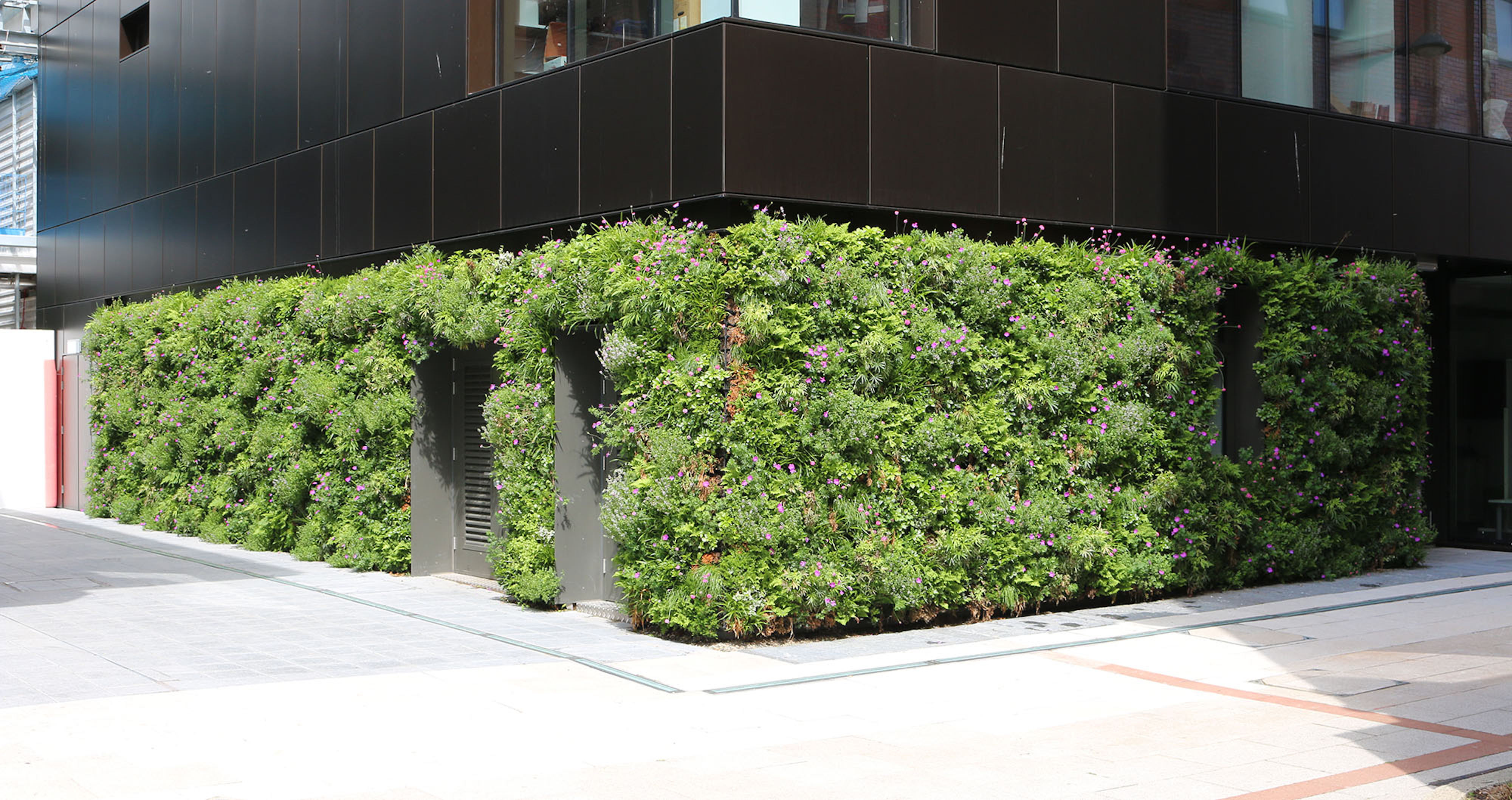As we become increasingly aware of the importance of environmental issues, there is one sector in which sustainability is now more crucial than ever.
Responsible for 39% of energy and process-related CO2 emissions, the building and construction sector significantly impacts the global environment. With an estimated 60-70% increase in energy use in buildings projected by 2050, it is imperative that more sustainable practices in the design, construction, and operation of the built environment are adopted.
What is environmental architecture?
Environmental architecture, also known as green architecture or sustainable design, is a practice that prioritises environmental responsibility in the construction and operation of buildings. It integrates eco-conscious design strategies to reduce a building’s carbon footprint and its impact on natural ecosystems.
At its core, environmental architecture is built around the following key principles:
1. Energy efficiency
Reducing energy demand is central to environmental design. This includes:
- Optimising building orientation and layout for natural heating, cooling and lighting
- Using high-performance insulation, energy-efficient windows and LED lighting
- Integrating passive solar design and smart systems to reduce reliance on fossil fuels
2. Water conservation
Environmental architecture promotes the efficient use and reuse of water:
- Implementing low-flow fixtures, greywater systems and rainwater harvesting
- Designing landscapes with native, drought-tolerant plants to reduce irrigation needs
- Managing stormwater through green roofs, permeable paving and bioswales.
3. Material sustainability
Materials are chosen for their low environmental impact, durability and recyclability:
- Prioritising recycled, reclaimed or locally sourced materials
- Avoiding toxic or VOC-emitting products to improve indoor air quality
- Designing for material reuse or recycling at the building’s end of life
4. Waste reduction
From construction through operation, sustainable architecture limits waste:
- Minimising offcuts and packaging during construction through precision design
- Using modular building systems to reduce excess
- Encouraging recycling, composting and deconstruction instead of demolition
5. Long-term adaptability
Buildings are designed for the future, not just the present:
- Incorporating flexible layouts that can evolve with changing needs
- Ensuring easy upgrades for systems like energy or lighting
- Building for resilience – withstand climate change, flooding and extreme weather
By weaving together these principles, environmental architecture creates spaces that are climate-resilient, resource-efficient and health-conscious, contributing to a built environment that is both innovative and sustainable.
Ultimately, this approach seeks to create buildings that are not just functional and attractive, but resilient, healthy and aligned with the natural world, from material sourcing to end-of-life decommissioning.

Living walls: A practical example of environmental architecture
A living wall, also known as a green wall or vertical garden, is an example of environmental architecture. Living walls are wall-mounted structures covered in vegetation, typically a mix of flowering and foliage plants, mosses, and ferns. Living walls serve several environmental purposes:
Living wall advantages include:
- Improving air quality by filtering pollutants from the air and releasing oxygen through photosynthesis.
- Providing insulation and help regulate the temperature inside the building, reducing energy consumption for heating and cooling.
- Increasing biodiversity by providing habitat for insects, birds, and other wildlife.
Living walls are often designed and installed with the use of modular planters and an irrigation system, making them easy to maintain and adaptable to various climates and environments. They are a prime example of how environmental architecture can enhance buildings' functionality and beauty while contributing to a healthier and more sustainable environment.
Green roofs: A living example of sustainable architecture
Green roofs, also known as vegetative or eco-roofs, are another powerful example of environmental architecture in action. These systems involve growing vegetation over a waterproofed roof surface, transforming unused roof space into a living, functional part of the building.
Green roofs contribute to sustainability by:
- Reducing the urban heat island effect
- Improving thermal insulation, lowering heating and cooling needs
- Managing stormwater runoff and reducing strain on drainage systems
- Enhancing biodiversity by providing habitat for pollinators and birds
- Extending roof lifespan by shielding materials from UV rays and temperature extremes
Beyond performance, green roofs also improve the aesthetic and psychological value of buildings, especially in dense urban areas where green space is limited. They create a tangible connection between architecture and nature, aligning beautifully with the principles of biophilic and regenerative design.
By integrating green roofs into projects, environmental architects can turn traditionally passive surfaces into active, multi-functional assets that support both ecological health and human well-being.
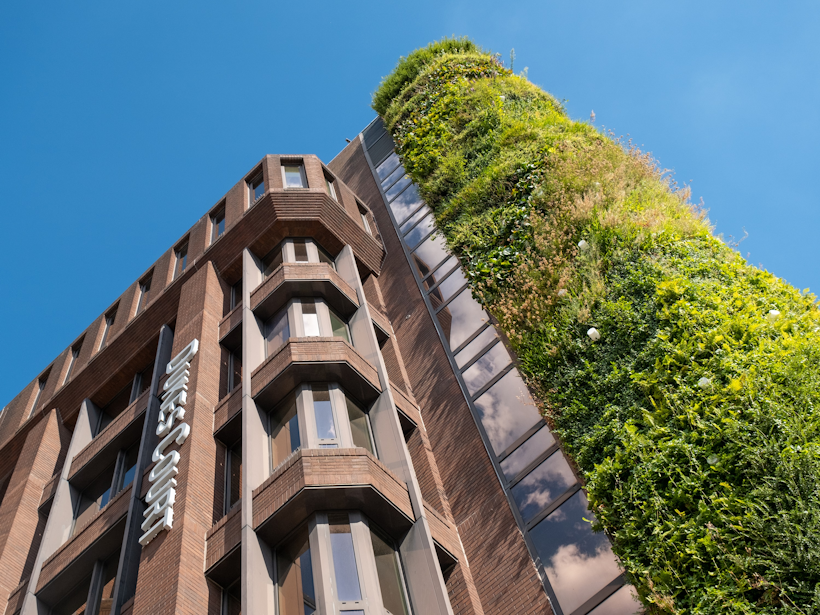
Eco-brutalism in modern façade designs
Eco-brutalism is an emerging trend that blends the bold, raw aesthetic of brutalism with sustainable materials and ecological intent. Brutalism is being reimagined through the lens of environmental architecture to support modern performance standards and ecological resilience.
Key features of eco-brutalist façades include:
- Green concrete alternatives and recycled steel to reduce embodied carbon
- Living walls and green roofs integrated into heavy massing to offset the visual harshness
- Low maintenance materials that age gracefully and reduce lifecycle environmental costs
This fusion of brutalist form with green function creates façades that are expressive, durable and environmentally conscious. It challenges perceptions of sustainability as soft or decorative.
Eco-brutalism shows that environmental architecture can be bold, honest and radically future-focused.
Biophilic urbanism and environmental architecture: Designing greener, healthier cities
Biophilic urbanism is a core principle of environmental architecture, focusing on reconnecting urban environments with nature to improve human health, enhance biodiversity and increase climate resilience. It goes beyond placing plants in buildings, it is about embedding natural systems into the fabric of city design.
Biophilic cities integrate green infrastructure such as:
- Living walls
- Green roofs
- Urban forests
- Wetlands
These interventions offer more than aesthetic appeal; they provide measurable environmental and social benefits.
Environmental architects play a vital role in implementing biophilic principles, designing buildings and urban landscapes that support both ecological health and human flourishing.
By embracing biophilic urbanism, cities can become healthier, more resilient and better equipped to face the environmental and social challenges of today.
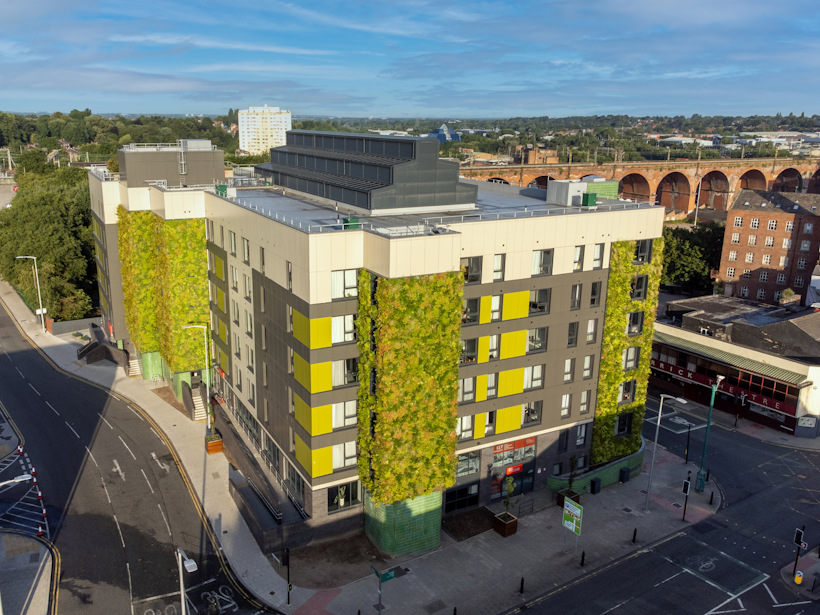
Why is environmental architecture important?
Environmental architecture is important due to buildings' significant role in resource consumption and waste generation.
A recent report by the World Green Building Council estimated that the building sector is responsible for over 60% of global electricity consumption and 40% of total energy use. Additionally, the construction, operation, and demolition of buildings generate large amounts of waste, with an estimated 40% of total global waste being generated by the building sector.
By incorporating environmentally conscious design strategies, such as energy-efficient building materials, renewable energy systems, and sustainable water management practices, environmental architecture can:
Reduces the environmental impact of buildings
Environmental architecture is important in reducing the environmental impact of buildings because it addresses the negative impacts that buildings can have on the environment. The construction and operation of buildings are significant contributors to climate change, air pollution, water pollution, and the depletion of natural resources.
Without the incorporation of sustainable design principles and technologies, buildings would continue to have negative impacts on the environment. However, through environmental architecture, buildings can be designed and constructed in a way that minimises their environmental footprint. They can do this by reducing energy consumption, promoting water efficiency, using sustainable building materials, and creating healthy indoor environments.
Achieves compliance with environmental and structural regulations
Environmental architecture is aimed at building structurally, and environmentally sound buildings. By implementing a more sustainable approach to the design of buildings, environmental architecture can solve regulatory challenges and planning conditions.
Environmental standards such as BREEAM (Building Research Establishment Environmental Assessment Method) and WELL, provide a framework for designing, constructing, and operating environmentally friendly and health-promoting buildings.
These standards play a huge role in environmental architecture by setting a benchmark for sustainable design and construction practices. They encourage the use of green technologies, energy-efficient systems, and healthier indoor environments. This helps to reduce the environmental impact of buildings and promote the well-being of those who occupy them.
By taking a holistic approach to sustainable design, environmental architects can create buildings that are not only environmentally friendly, resilient, durable and cost-effective long term.
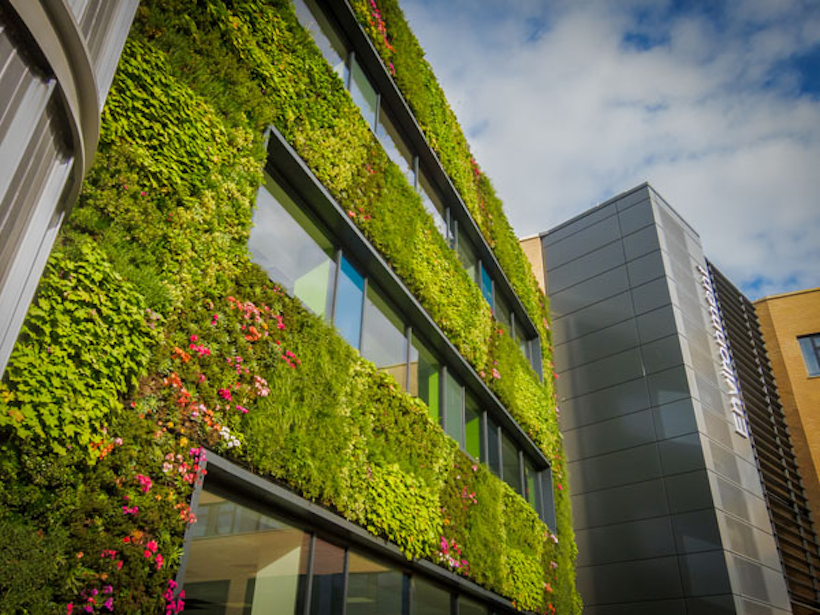
Sustainable design enhances energy efficiency
Environmental architecture is important in increasing the energy efficiency of buildings and helping to reduce the greenhouse gas emissions they create. This can be achieved through the use of energy-efficient building materials, renewable energy systems, and energy-saving technologies such as:
- Solar panels
- Living wall systems (for insulation and temperature regulation)
- High-performance windows (for insulation, temperature regulation, and natural light sources)
- Green roofs (for insulation and temperature regulation)
By reducing energy consumption, environmental architecture can help lower operating costs, improve energy security, and mitigate the impact buildings have on climate change by reducing the need for non-renewable energy sources.
Improves health and well-being
The design of a building can impact the health and well-being of occupants massively if environmental and structural standards aren’t met.
Environmental architecture ensures buildings are designed with the planet and people in mind. Through the use of sustainable design strategies, environmental architects can create spaces that promote health and well-being through:
- Indoor environmental quality: Environmental architecture focuses on improving indoor environmental quality by incorporating design elements that promote healthy indoor air quality, natural light, and temperature control. This helps to create a comfortable and healthy living environment that can reduce the risk of respiratory and other health problems, increase productivity, and improve overall well-being.
- Biophilia:Environmental architecture often incorporates elements of nature, such as green roofs, living walls, and natural ventilation, into building design. This can improve access to nature, boost mental and physical health, and reduce stress levels.
- Active Design:Environmental architecture often incorporates active design elements, such as stairs and bike storage, that encourage physical activity and promote healthy lifestyles. This helps to combat the negative health effects of sedentary lifestyles, such as obesity, heart disease, and other chronic conditions.
- Community building: Environmental architecture can help to create a sense of community by designing spaces that encourage social interaction and promote community engagement. This can improve mental health, foster a sense of belonging, and create a supportive environment that promotes well-being.
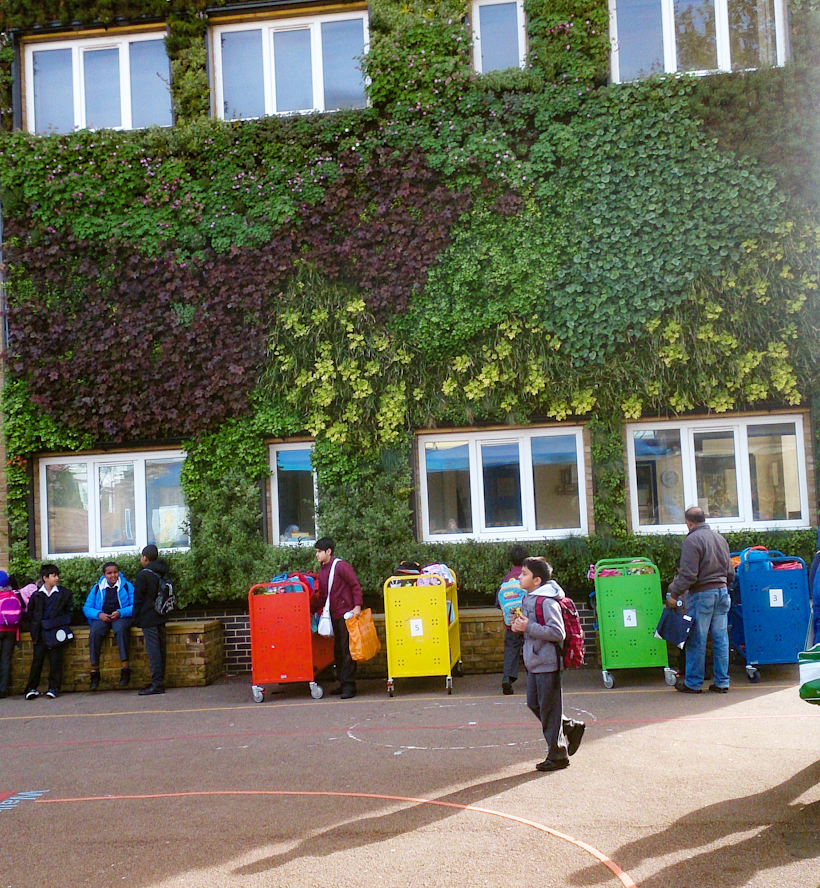
Barriers to adoption and how to overcome them
While environmental architecture offers long-term benefits, several barriers can hinder its widespread adoption:
- Cost: Sustainable materials and technologies can have higher upfront costs. However, these are often offset by lower energy bills and maintenance over time.
- Regulations: Complex or outdated planning policies can slow innovation. Early engagement with planning authorities and working with specialists, like Viritopia, who understand green building codes can ease this process.
- Public perception: Some still view sustainable design as a niche or as impractical. Clear communication of the benefits can shift attitudes and build demand.
Looking for environmental architecture consultancy?
Are you in the early stages of development? Are you looking to capitalise on environmental assets? Are you interested in learning more about living walls? Our team at Viritopia has you covered.
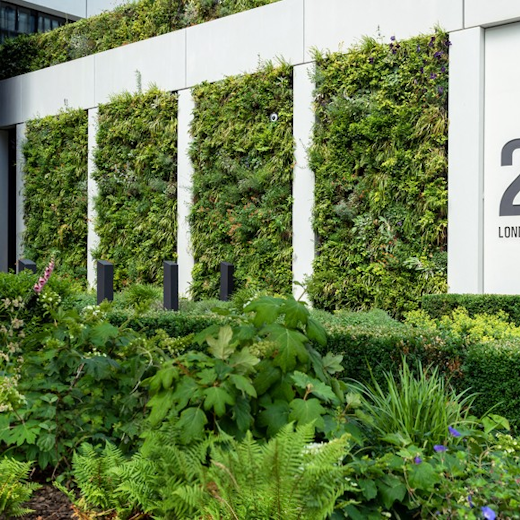
Looking for environmental architecture consultancy?
Whether you are in the early stages of a development or looking to retrofit an existing building with sustainable features, in London or across the UK, Viritopia offers expert environmental architecture consultancy tailored to your project’s needs.
Our specialists help developers, architects and planners identify and implement strategies that maximise environmental performance, achieve regulatory compliance and unlock long-term cost savings.
From green infrastructure like living walls and green roofs to energy modelling, biodiversity planning and BREEAM or WELL support, we guide you through each step with clarity and confidence.
Partner with us to:
- Integrate sustainable design from concept to completion
- Navigate complex planning and environmental regulations
- Enhance your project’s green credentials and long-term value
- Access innovative, scalable solutions that balance design with impact
Explore our consultancy service
Viritopia has over 20 years of experience designing and maintaining green infrastructure to create a detailed analysis of how a scheme will meet regulatory requirements. We help to streamline the planning process and provide you with what’s needed to take your project to the next level. Head to our site to book a living wall consultancy or explore more about our green walls and their benefits.
